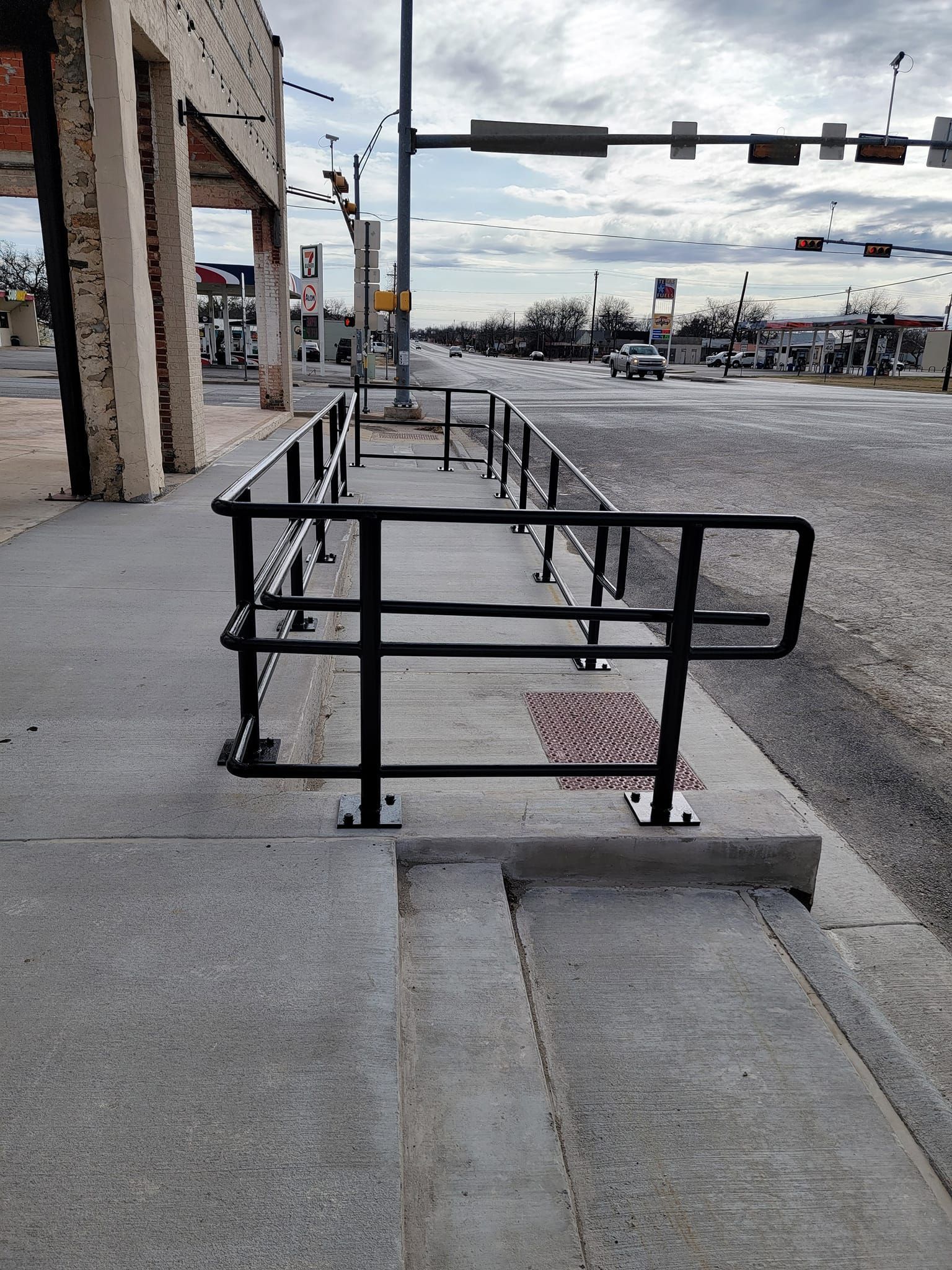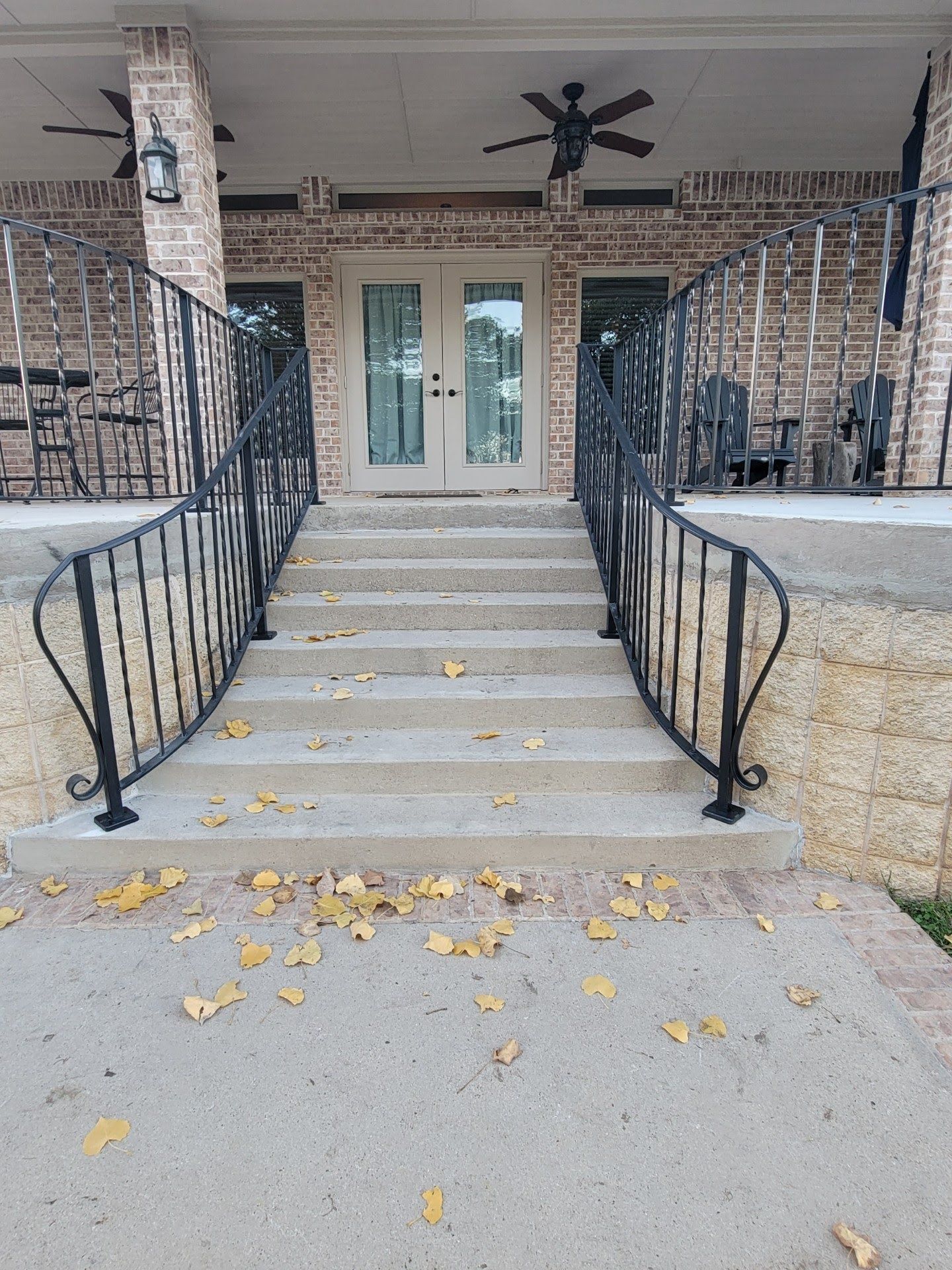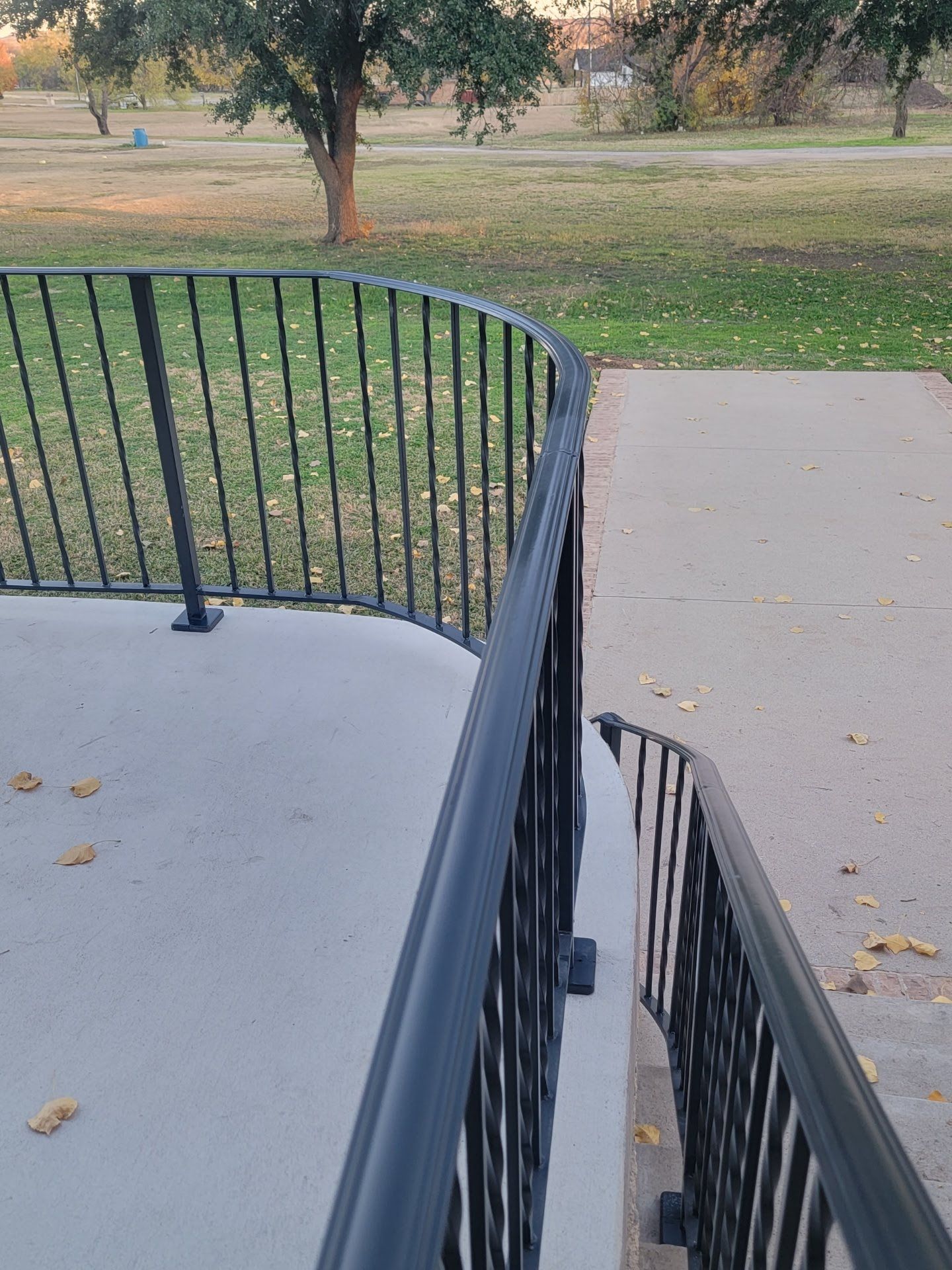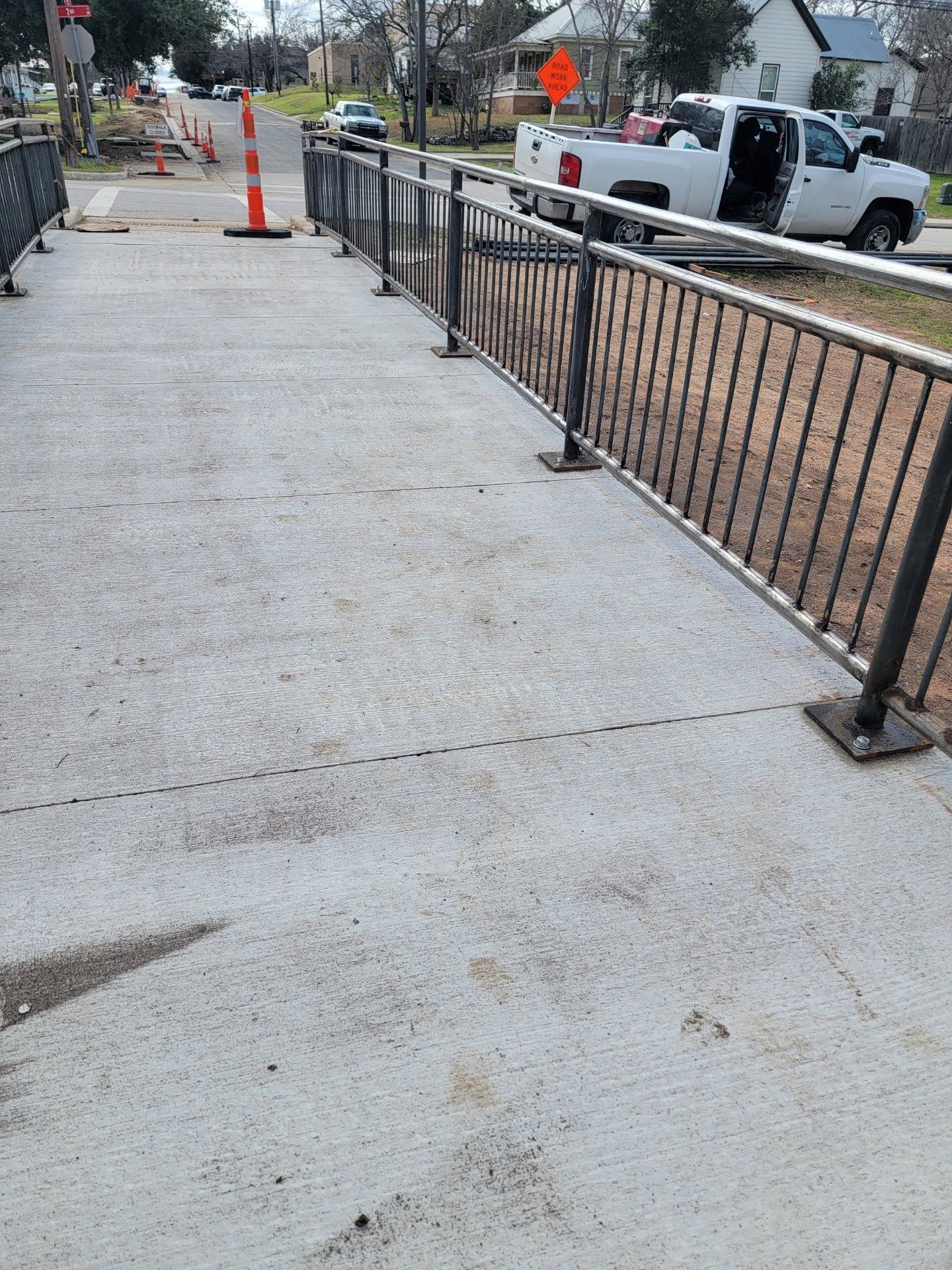Hurst Fence Company
817-886-6046
Handrail Installation Contractor in Dallas-Fort Worth

Contact Us
Building the Perfect Handrails for your Property
We all need something (or someone) to hold on to at times... That's why we decided to specialize in handrail installation for our clients. Whether you're a business owner looking for a handrail to accompany a wheel chair access ramp or a homeowner looking to add a stylish handrail to your front door steps, our team has done it all and we're ready to help you bring your vision to life.
Expert Handrail Contractors
We believe that the key to any project is proper planning and execution. That's why we start every project with a thorough assessment of the area you need the handrail in and what your specific uses will be. Factors like where the handrail will be (indoor vs. outdoor), building codes, material you want, style and design preferences, height and length, and the type of structural support you'll have for the handrail. We also consider other factors, like whether you'll need non-slip grips or end-caps and returns, as all of these details make up the difference between a satisfied and unsatisfied customer for the long run.
Materials We Use
- Steel
- Wood
- Wrought Iron
- Aluminum
- And more!
Take a Look at Some of our Work!
Things to Consider When Installing New Handrails
Installing a handrail is a crucial step in enhancing safety and accessibility on your property. Whether it’s for stairs, ramps, or balconies, here are some keys to keep in mind to ensure a successful installation:
1. Purpose and Location
- Safety Needs: Determine the primary purpose of the handrail. Is it for providing support on stairs, ensuring safety along a balcony, or aiding mobility on a ramp?
- Indoor vs. Outdoor: Different environments require different materials and designs. Outdoor handrails need to withstand weather conditions, while indoor handrails can focus more on aesthetics and comfort.
2. Building Codes and Regulations
- Local Building Codes: Check local regulations for specific requirements regarding handrail height, spacing, and load-bearing capacity.
- ADA Compliance: Ensure the handrail meets the standards set by the Americans with Disabilities Act (ADA) if accessibility for people with disabilities is a concern.
3. Material Selection
- Durability: Choose materials like stainless steel, aluminum, wood, or wrought iron based on their durability and maintenance needs. For outdoor installations, weather-resistant materials are essential.
- Aesthetic Appeal: The handrail should complement the existing design and architecture of your property.
4. Design and Ergonomics
- Comfort: The handrail should be comfortable to grip, with a smooth, rounded profile that fits the hand well.
- Style: Select a design that matches the overall look of your property. Options range from traditional to modern styles.
5. Height and Length
- Proper Measurements: Typically, handrails should be installed between 34 and 38 inches above the stair nosing. Ensure the length covers the entire stairway or ramp, with extensions for safety.
6. Mounting and Stability
- Secure Installation: Use appropriate mounting hardware and ensure the wall or structure supporting the handrail is sturdy and capable of bearing the load.
- Spacing: If using balusters or spindles, ensure they are spaced correctly to prevent accidents and comply with safety standards.
7. Safety Features
- Non-Slip Grips: Consider materials or finishes that provide a non-slip grip, especially for outdoor handrails.
- Smooth Edges: Ensure all edges are smooth and rounded to prevent injuries.
8. Environmental Considerations (for Outdoor Handrails)
- Weather Resistance: Choose materials that can withstand exposure to the elements, including UV rays, rain, and temperature fluctuations.
- Maintenance Needs: Some materials, like wood, may require regular maintenance such as sealing or painting, while metals may need periodic rust treatment.
9. Cost and Budget
- Budget Planning: Factor in the cost of materials, labor, and any additional features. Be prepared for potential unexpected expenses.
- Long-Term Value: Consider the long-term durability and maintenance costs of the materials chosen.
10. Professional vs. DIY Installation
- Skill Level: Assess your own skills and experience. Professional installation ensures compliance with codes and standards, while DIY may be more cost-effective but requires careful planning and execution.
- Tools and Equipment: Ensure you have the necessary tools and equipment if you choose to install the handrail yourself.
By thoroughly considering these factors, you can ensure that your handrail installation is safe, compliant, and aesthetically pleasing, providing long-term safety and value for your property.
Benefits of Working with Us
Choosing the right handrail contractor for your project is a big decision, so we do our best to make it a no-brainer for you. We at Hurst Fence Company make sure to get the job done right the first time and communicate with you from start to finish so that you're always in the loop. Here are a couple of benefits of going with us for your next handrail project:

How Do Our Services Work?
Curious about our process? Let me give you a quick overview. From opening consultation to final handshake, our approach is all about building great handrails that both secure your property and help bring out its natural beauty. We get excited about it and hope you will too!



